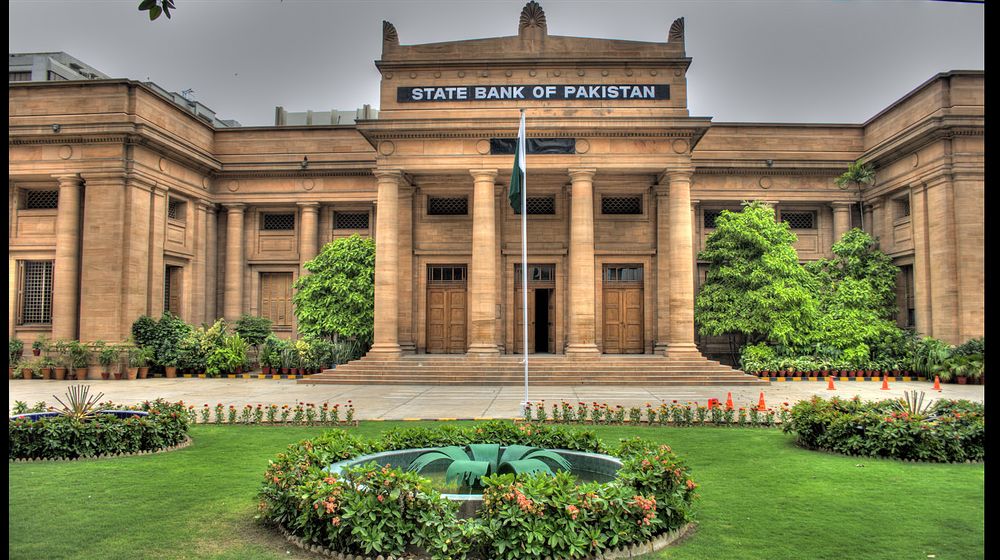State Bank of Pakistan (SBP) has lowered its projection of real GDP growth for FY20 to 3.0 percent from 3.5 percent in light of the recent domestic and global developments on the economic front due to the coronavirus pandemic.
The central government pointed out that the economy is expecting a modest recovery next year provided that the spillover impact of the coronavirus outbreak on global trade and financial markets is moderate and short-lived.
In such a scenario, the export slowdown and market volatility should be contained while the benign growth and inflation impact of lower global commodity prices would dominate. Under an adverse scenario, a more prolonged and severe phase of weak demand in Pakistan’s major export and remittance markets and depressed sentiment among domestic consumers and businesses could have a more material impact on growth.
In both of these scenarios, the impact on the current account is expected to be mildly positive as the savings from low oil prices are expected to offset potential weaknesses in net exports and remittances.
Real Sector
Recent high-frequency indicators re-affirmed that the decline in most economic sectors was bottoming-out before the coronavirus outbreak. Large-scale manufacturing (LSM) rebounded strongly in December 2019, moving into positive growth (9.7 percent y/y) for the first time in the last six months, and indicated strengthening in a growing number of industries, especially export-oriented ones.
Notwithstanding some improvement relative to last year, agricultural growth is likely to be lower than previously forecast.
External Sector
The external sector continues to improve substantially. The current account deficit contracted by 72 percent to $2.65 billion during Jul-Jan FY20, driven by a significant reduction in imports and modest growth in both exports and workers’ remittances.
The monetary policy committee (MPC) noted that Pakistan’s exports have performed better in recent months than most of its competitors despite the challenging external environment. This improvement reflected the benefits of a more competitive exchange rate, availability of low-cost funding for export-oriented sectors under the SBP’s refinancing facilities, and government efforts to facilitate businesses.
Notwithstanding recent volatility in foreign exchange markets, SBP’s FX reserves have maintained strong growth, driven by the narrowing current account deficit. Reserves increased from $7.28 billion at end-June 2019 to $12.76 billion as of end-February 2020 – an increase of $5.48 billion.
The actual improvement in the country’s external position is much larger, given the sizeable reduction in SBP’s forward liabilities of $5.20 billion during the same period. The MPC observed that this increase in the net reserve buffers of SBP of $10.68 billion is more than sufficient to cope with any portfolio outflows in an orderly manner. The MPC noted that the SBP continues to monitor developments carefully and stands ready to respond effectively to address any disorderly market conditions.
Fiscal Sector
Fiscal consolidation remains on track, supporting a qualitative improvement in the inflation outlook. During Jul-Feb FY20, tax revenues showed a healthy increase of 17.1 percent over the same period last year. On the expenditure side, increased public spending relative to last year is supporting business activities, especially in construction-allied industries.
Going forward, the government could face challenges in achieving revenue targets for this year, especially if there are disruptions in economic activity, and may require increased expenditures in health and social sectors to cushion the impact of the coronavirus pandemic.
Monetary and Inflation Outlook
Barring unforeseen shocks, the inflation momentum is expected to moderate further in the coming months. There is a high likelihood that average inflation in FY20 will be in the 11-12 percent range forecast by the MPC at the start of the year.
With a reduction in the policy rate, the MPC felt that real interest rates are appropriate on a forward-looking basis to achieve the 5-7 percent medium-term inflation target. The MPC also decided to make the interest rate corridor symmetric around the policy rate, in line with international best practices.
The MPC decided to cut the policy rate by 75 bps to 12.50 percent.
The decision reflected the MPC’s view that the outlook for inflation has improved in light of the recent deceleration in domestic food prices, a significant decline in consumer price expectations, a sharp fall in global oil prices, and a slowdown in external and domestic demand due to the coronavirus pandemic.
Average headline inflation is expected to remain within the SBP’s 11-12 percent forecast in FY20, before falling to the medium-term target range of 5-7 somewhat earlier than previously forecast.
The MPC emphasized that the current market volatility is externally driven and the strengthening in the fundamentals of Pakistan’s economy that drove the improvement in Pakistan markets before the Coronavirus outbreak remains intact. As a result, they viewed that the volatility in the domestic markets would likely subside once global risk aversion reduces and country-specific fundamentals regain importance.


























